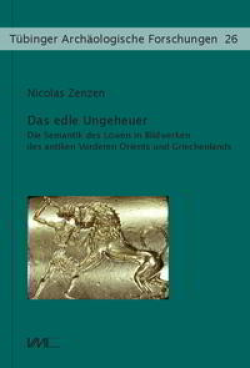|
Das edle Ungeheuer
|
| Die Semantik des Löwen in Bildwerken des antiken Vorderen Orients und Griechenlands |
| von Nicolas Zenzen |
| Lions used to be very common in the ancient Near East and were and still are fascinating animals to humans, whose charisma of superior imperturbability made an impressive appearance of fascinating elegance and who, at the same time, posed a serious threat to human body and life. The representations of lions considered here span some 3,000 years of cultural history from Italy to the River Oxus [Amu Darya] and yet comprise only a very limited spectrum of motifs and meanings reflected by the five chapters of the book [predator, lion hunt, subjugators of lions, guardian, sign of strength and majestic dignity]. All lion images have in common that they define the position of man in the world. The lion is the symbol of the threatening unpredictability of wild nature in contrast to the order of culture that inspires a feeling of security. When overcome by humans, the lion demonstrates man’s dominant position in the world. At the same time it can be a metaphor for the qualities of outstanding humans. Last but not least, the lion functions as a guardian marking certain spheres, in which defined human rules apply, and warns against any violation of these. |
| Hardcover |
|
inkl. USt., ohne Versandkosten
gebundener Verkaufspreis
Lieferbar
|
| ISBN: 978-3-89646-917-5 |
| Verlag: VML Vlg Marie Leidorf (Hauptverlag) |
| Veröffentlicht: 01.08.2018 |
| Auflage: 1. Auflage |
| Seiten: 426 Seiten |
| Höhe: 29.00 cm |
| Breite: 21.00 cm |
| Gewicht: 2030.00 gr |
| Sprache: Deutsch |
|
Verschlagwortung
Hardcover; Softcover; Geschichte/Altertum; Geschichte und Archäologie; Ritual; Archäologie; König; Tier; Verstehen; Löwe; Jagd; Raubtier
|
